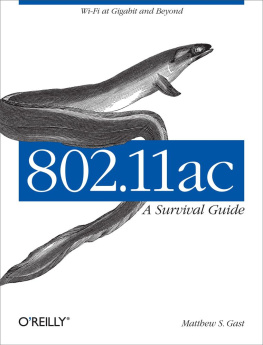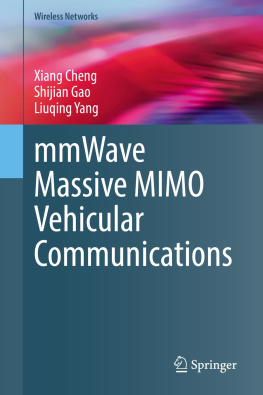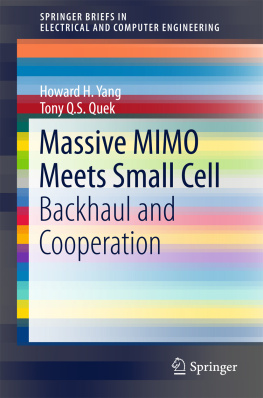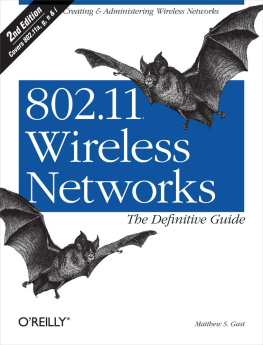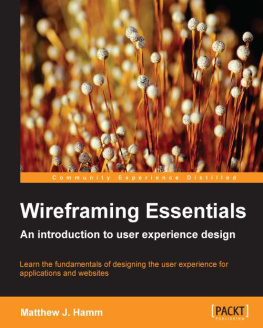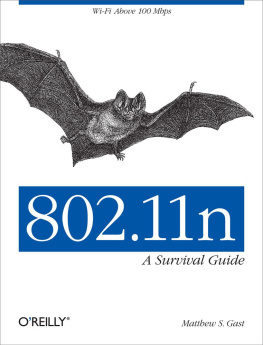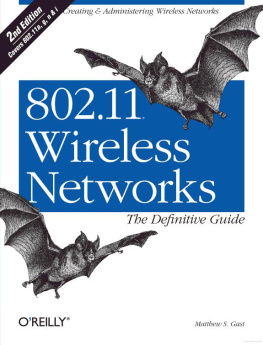802.11ac: A Survival Guide
Matthew S. Gast
For L.,
who reminds me its okay to have my head in the clouds sometimes.
And for the NCSA instruction team who made me into a pilot so I can get there:
Mike, Terence, Larry, Mike, John, Buzz, and John.
Foreword
Julius Genachowski
Today, its easy to take Wi-Fi and its magical benefits for granted. Wi-Fi is a fundamental part of our Internet ecosystemits hard to imagine a world without it. In fact, the world without Wi-Fi wouldnt be the world we have; wed be missing out on vast elements of the Internets potential.
But the invention of Wi-Fi wasnt inevitable. The technological innovation we call Wi-Fi required a major innovation in U.S. government spectrum policy.
Wi-Fi is a use of spectrum on an unlicensed basis, and the Federal Communications Commission (the U.S. government agency created more than 75 years ago to manage communications, including those using electromagnetic spectrum) didnt allow that type of use until 1985. Spectrum frequencies were assigned only on an exclusive licensed basis. These exclusive licensesgranted to launch radio, TV, satellite, and backhaul transmissionshelped create tremendous economic and social value, so maybe it wasnt a surprise that the FCC hadnt authorized spectrum bands for unlicensed use.
But then, along came an idea: there were some bands of spectrum that were lying largely fallowat 900 MHz, 2.4 GHz, and 5.8 GHz. Nobody could figure out what they could be licensed for. The bands were surrounded by other commercial uses, and transmissions at high or even moderate power levels or distances would cause interference. These became known as the garbage or junk bands, and they sat there.
That is, until a brilliant policy innovator named Michael Marcus, an FCC staff engineer, suggested that this spectrum be made available for use without a license and on a shared basis, as long as the transmissions were at low power levels and they didnt interfere with neighboring licensed uses.
The bet was that innovators would figure out how to weave value out of that spectrum. Although it wasnt framed this way at the time, the idea was simple, forward-looking, and in retrospect, obviously consistent with the great arc of American invention: provide a platform for innovation, and innovators will come.
So on May 9, 1985, the FCC adopted a little-noticed Order on spread spectrum technology that opened up the junk bands. And innovators got to work.
Before long, someone had invented garage-door openers using unlicensed spectrum; then wireless microphones, cordless phones, Bluetooth, and eventually Wi-Fi.
Wi-Fi has had staggering success: from a standing start, its now been adopted in roughly 200 million households worldwide. There are more than 750,000 Wi-Fi hot spots globally, and over 800 million Wi-Fi-enabled devices are sold every year. And all of these metrics are growing.
Devices and services built on unlicensed spectrum are an essential part of the U.S. economy: studies estimate that unlicensed spectrum generates as much as $37 billion annually for the U.S. economy. Wi-Fi hot spots in the United States increase the value of licensed broadband service by an estimated $25 billion a year.
And the benefits have dovetailed into other key sectors: 80% of wireless healthcare innovations, for example, are now on done on unlicensed spectrum, according to one report. Unlicensed spectrum is transforming our homes, with amazing products already in the market offering entirely new and exciting ways to enjoy music and video, and other products to drive energy efficiency. Wi-Fi is a key basis of machine-to-machine communicationsor the Internet of Thingsa swiftly emerging market with potential to transform any number of sectors; weve had a 300% increase in connected M2M devices using unlicensed spectrum in the past five years, and thats just the beginning.
In other words, unlicensed spectrum is a boon for the American economy, and it continues today to provide start-ups and innovators access to a test bed for spectrum that is used by millions, helping bring new technologies to consumers in a rapid fashion.
Wi-Fi hasnt been the only major spectrum policy innovation in the last three decades.
The FCC pioneered spectrum auctions for the world in the 1990san alternative to the less-efficient, case-by-case administration of licenses through lotteries and comparative hearingsand has since conducted over 80 auctions, granting more than 30,000 licenses. These auctions have generated over $50 billion for the U.S. Treasury and, even more important, over $500 billion in value for the U.S. economy, according to expert economists.
The FCC also, quite consequentially, began to grant spectrum licenses for flexible use, rather than strictly circumscribing use to particular purposes. Flexible spectrum rights help ensure spectrum moves to uses valued most highly by markets and consumers, and the FCC has been hard at work the past few years to maximize flexibility and remove outdated use rules and restrictions.
Together, licensed and unlicensed spectrum have given us the amazing mobile Internet ecosystem we enjoy todaysmartphones, tablets, the new apps economy, and more. And the mobile revolution is driving economic growth, job creation, and U.S. competiveness. Nearly $250 billion in private capital has been invested in U.S. wired and wireless broadband networks since 2009; theres been more private investment in ICT than any other U.S. sector, including by major oil and gas or auto companies. The U.S. is the first country deploying 4G LTE networks at scale, and in late 2012 we had as many LTE subscribers as the rest of the world combined, making us the global test bed for next generation 4G apps and services.
The new mobile apps economya made-in-the-U.S.A. phenomenonhas already created more than 500,000 U.S. jobs, and more than 90% of smartphones sold globally in 2012 run operating systems developed by U.S. companies, up from 25% three years ago. Annual investment in U.S. wireless networks grew more than 40% between 2009 and 2012, while investment in European wireless networks was flat, and wireless investment in Asiaincluding Chinawas up only 4%.
But we know we face big challenges to our mobile momentum. None is greater than the spectrum crunch.
Spectrum is a limited resource. Yet smartphones and tablets are being adopted faster than any communications or computing device in history; U.S. mobile data traffic grew almost 300% last year, and is projected to grow an additional 16-fold by 2016. Wi-Fi and other unlicensed innovations are key to bridging this supply/demand gap. Wi-Fi already carries more Internet traffic than cellular networks, and commercial mobile carriers are offloading 33% of all traffic to Wi-Fi, with that amount projected to grow to 46% by 2017.
So with the U.S. mobile ecosystem booming and demand for spectrum skyrocketing, policymakers need to free up a large amount of new spectrum for both licensed and unlicensed use.
Fortunately, the FCC has been focused on this task. Early in the Obama administration, the FCC released the countrys first National Broadband Plan, which included a goal of freeing up 300 MHz of spectrum (including both licensed and unlicensed) by 2015 and 500 MHz by 2020, essentially doubling the amount of airwaves available for broadband by decades end. We will achieve the 2015 goal, and with continued focus and leadership, we can achieve the 2020 goal as well.
In 2010, the FCC freed up the largest amount of low-band spectrum for unlicensed use in 25 years by making high-quality white spaces spectrum available in between TV channels. And in early 2013, the FCC passed a plan to increase unlicensed spectrum for Wi-Fi by about 35%unleashing 195 MHz in the 5 GHz band.

